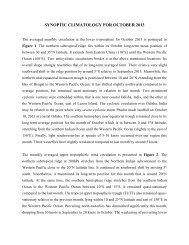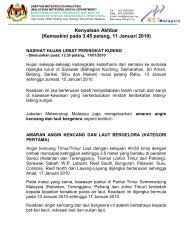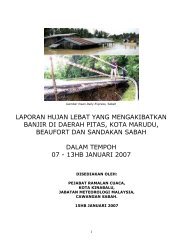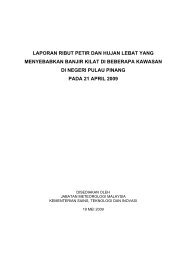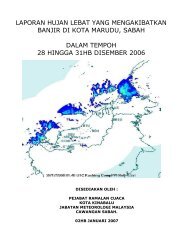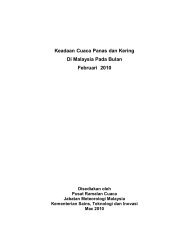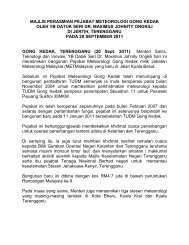Download
Download
Download
You also want an ePaper? Increase the reach of your titles
YUMPU automatically turns print PDFs into web optimized ePapers that Google loves.
1<br />
2<br />
3<br />
4<br />
1. When the vegetation dies, it does not rot away<br />
completely as the water in the hollows prevents<br />
oxygen, which most decomposer organisms need to<br />
live, from reaching the dead plants. The partly-rotted<br />
plants gradually build up to form the peat swamp.<br />
2. Eventually dark fibrous peat completely fills the<br />
hollow to form a peat swamp basin.<br />
3. Most of the nutrients are tied up in the peat and so the<br />
only minerals available for plant growth are those<br />
dissolved in rainfall. The decomposition of the rotted<br />
material create a very acidic environment, and in<br />
humid tropical climate, rain forests with appropriate<br />
root systems thrived.<br />
4. In some areas, eg Sarawak, an increasing thickness of<br />
peat slowly accumulates and the surface of the peat<br />
swamp starts to rise above the surrounding land,<br />
sometimes reaching a height of more than 7m after<br />
more than 6,000 years of growth. The water table in<br />
the raised mass fluctuates seasonally. But the moist<br />
condition remains because of the sponge-like abilities<br />
of the peat and the humidity and wet climate. The<br />
original peat swamp has now become a raised peat<br />
land.<br />
•Http://www.nics.gov.uk/doe env/leaflet5.htm<br />
National Hydraulic Research Institute of Malaysia, Ministry of Natural Resources and Environment (NRE)



